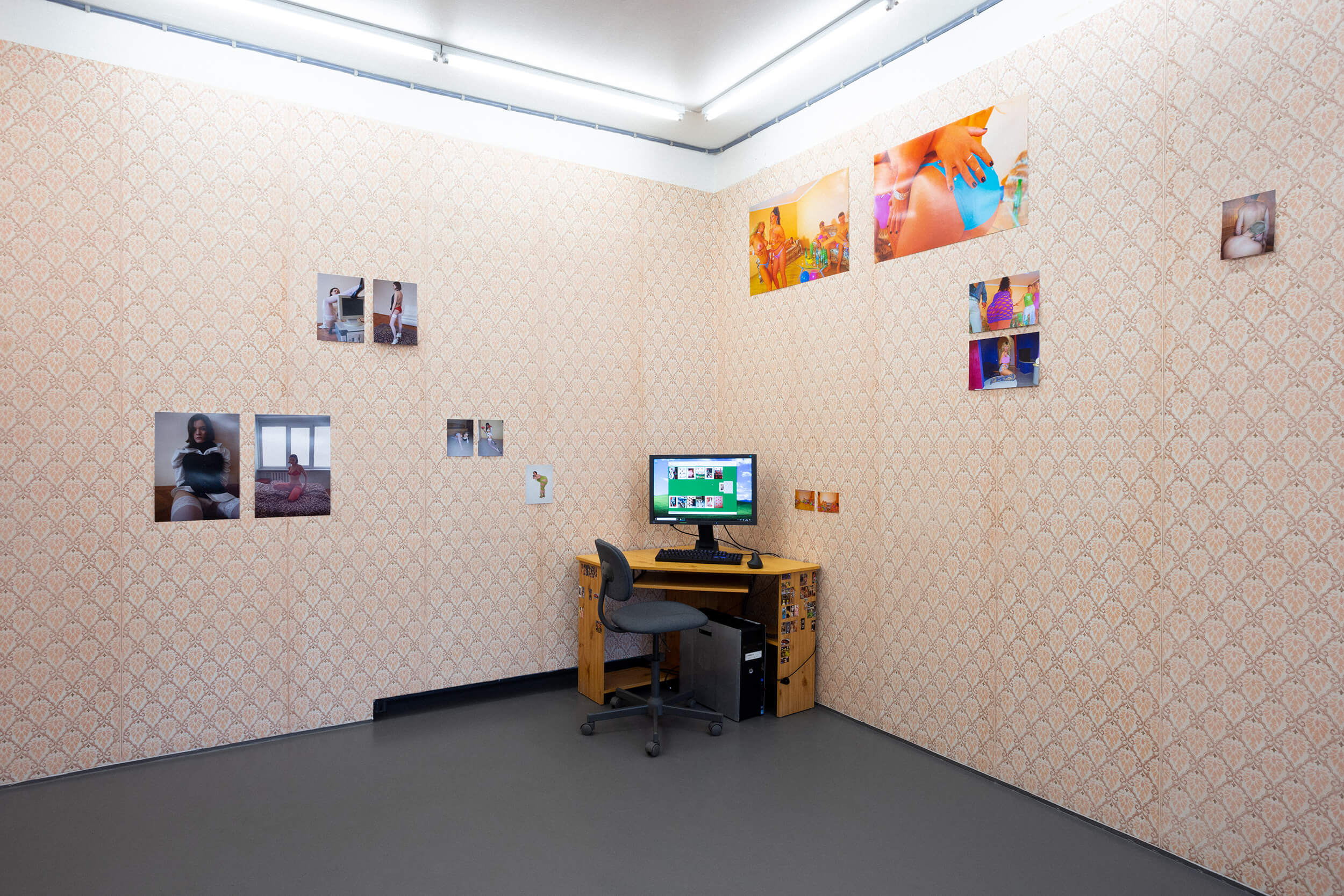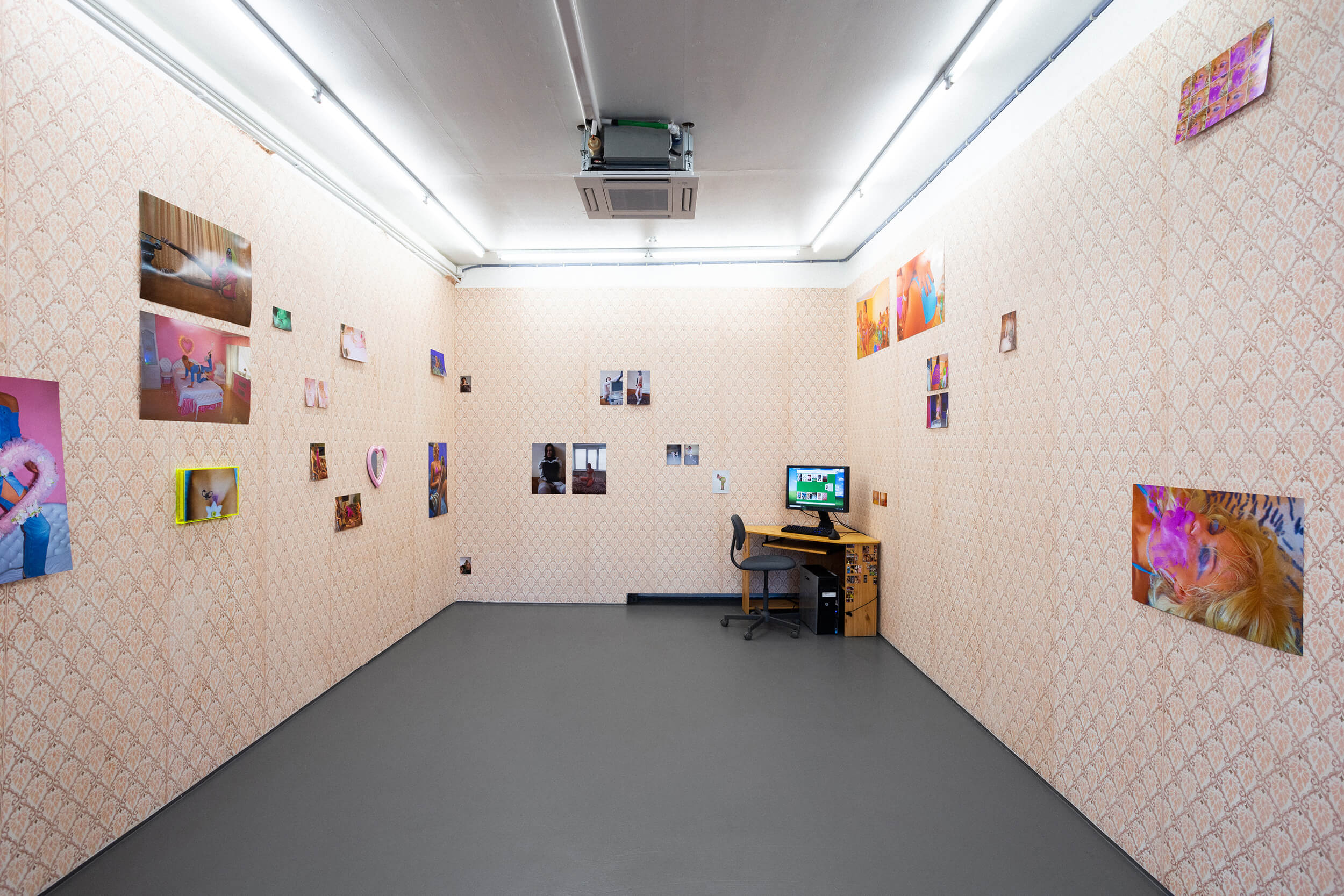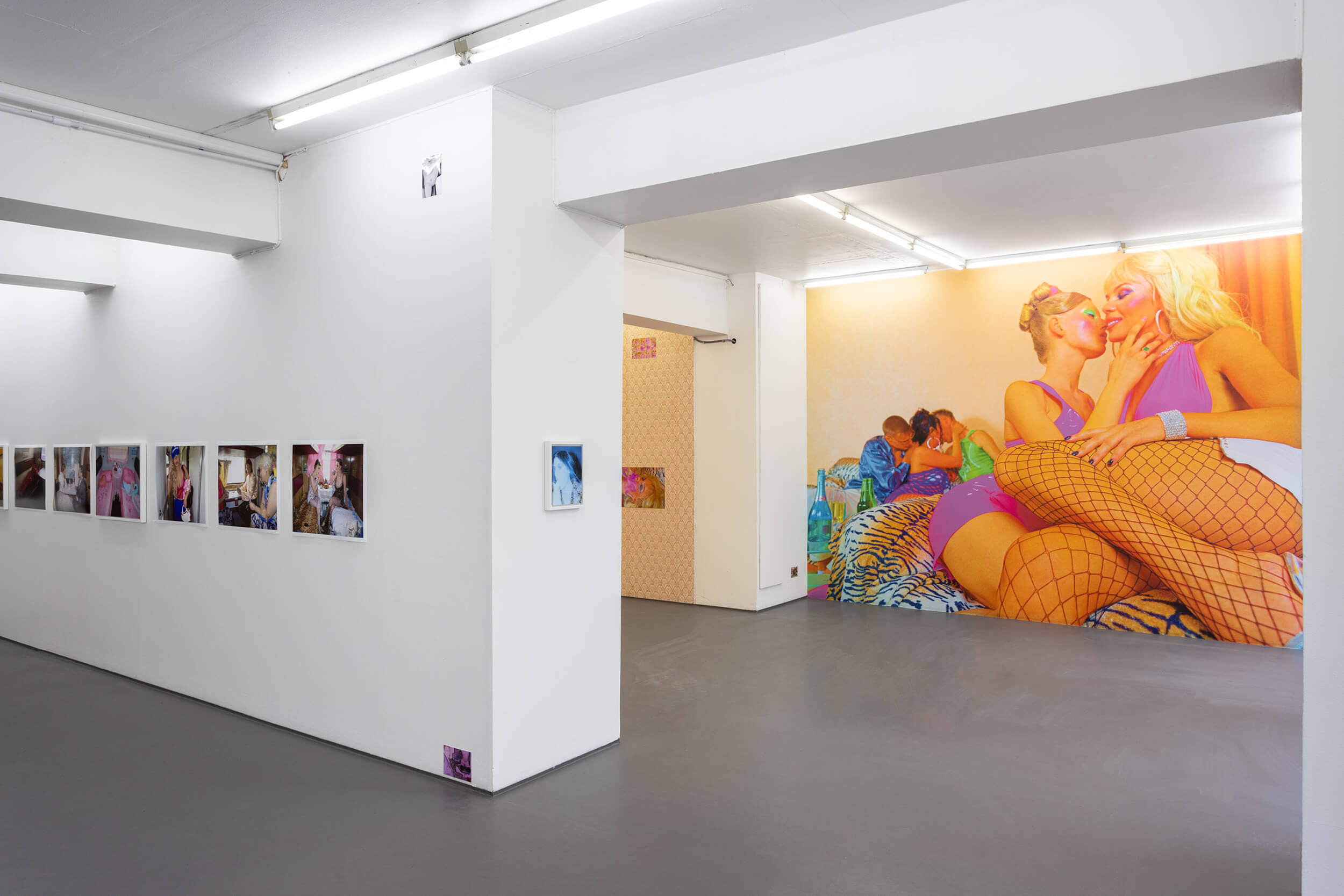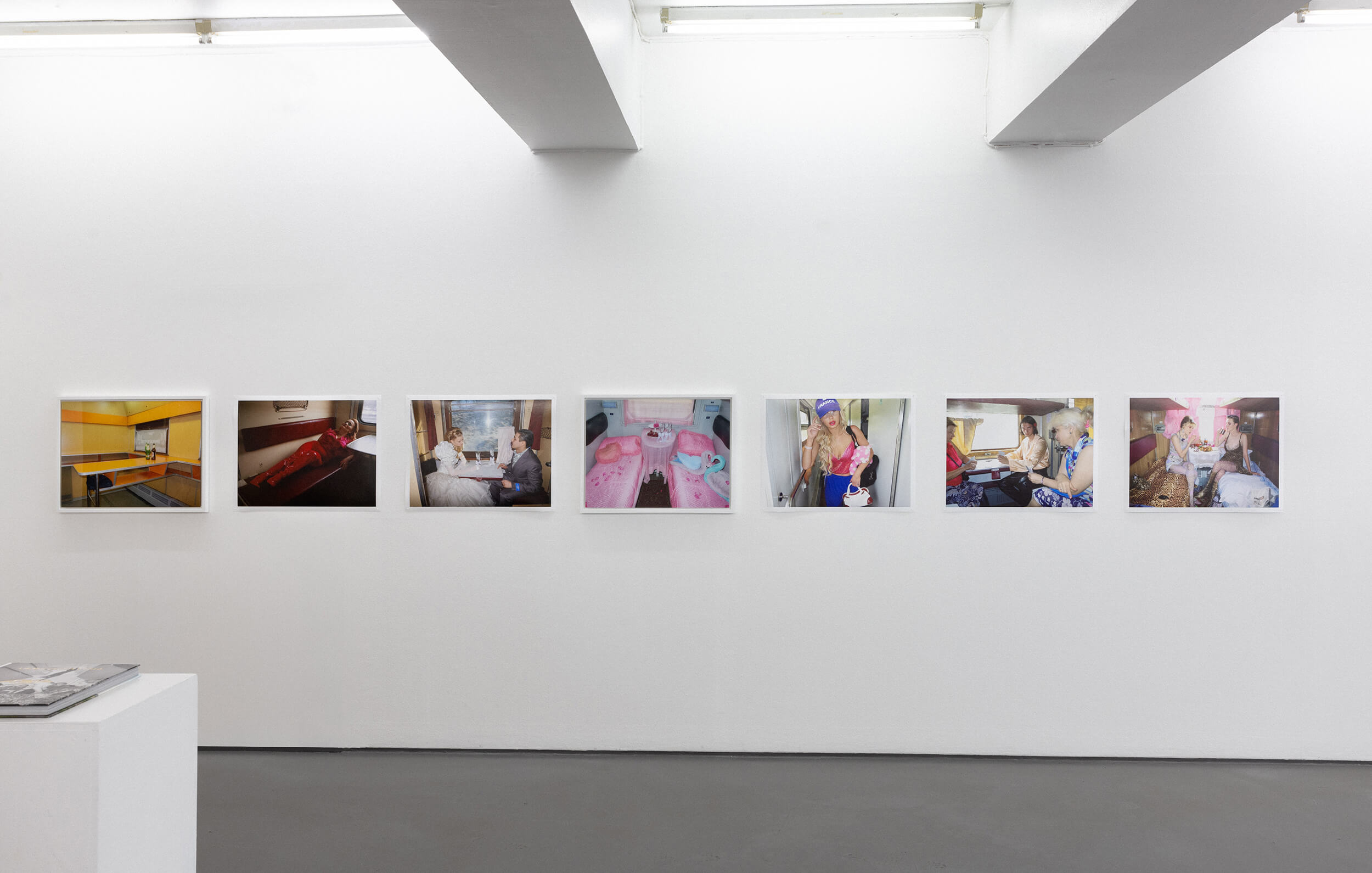4:59 | solo exhibition | Oslo, Fotogalleriet | 2023
Julie Poly. Who is she?
Anita Nemet
When new waves of global crises came back to Europe and Ukraine became politicly and culturally visible in term of fighting back the shadow of the cruel Russian empire it's imperative to talk more about the richness and depth of Ukrainian art through the voices of women artists.
Yulia Polyashchenko, renowned as Julie Poly, has an unusual career path and is one of her generation’s most influential Ukrainian artists working with the medium of photography. Having familiarized herself with the tradition of the Kharkiv School of Photography, the first community in Ukraine that started to work with conceptual photography, after the Kharkiv period the artist immersed herself in the search for her view of the subject appropriate for creative exploration which is related to her personal, professional experience and “kitschy” local aesthetics that was popular in 1990s—2000s. Like many artists from the millennial generation, Julie reflected on youth identity, predominantly female and queer.
Аn essential aspect of Julia's works is the empowerment of feminine bodies. She boldly mixes irony and eroticism while lovingly showing the diversity of women's ideas of beauty and their practices.
July Poly’s creativity outlines a wide range of artistic expressions where, in addition to the classical medium of photography, a performative approach to production appears, and the involvement of pop culture publications in the creation of conceptual projects expands the spectrum of interaction with wider audiences of influence.
4:59
One Minute Before The Invasion
The Girlhood, Adulthood, and Motherhood
But The War Had Come
The exhibition 4:59 by the Ukrainian photographer Julie Poly is divided into three rooms. They map three conditions that interconnect chronologically through the artist’s life and career—from her teenage years into adulthood and motherhood, currently seen through the lenses of the war.
The exhibition title, 4:59, refers to the minute before the full-scale Russian invasion of Ukraine at 5 am in the morning on 24 February 2022. Poly says: “To me, 4:59 is like a symbol of a time just before a traumatic event and the importance of accessing the memories of that time.”
In the exhibition at Fotogalleriet, Poly presents several projects together for the first time. The projects have been shown individually in different constellations and chapters since 24 February 2022, when Russia invaded Ukraine in a significant escalation of the Russo-Ukrainian War, which commenced with the Russian illegal annexation of Crimea in 2014.
Exploring how recollection moves and wanders, the images presented in this exhibition are stripped of the specificity of time and place to grapple with the role of memory during situations of loss and trauma. Today, the dreams and worlds depicted and constructed by Poly have been frozen at best, possibly broken, for a whole generation who play a central role in her work. Consequently, these images have become a trace of her life and artistic interests and represent a period of aspiring autonomy in Ukraine, particularly concerning feminism, gender, dissent, and non-conformance. Despite the images being taken in a country currently under siege, 4:59 strives to move sadness towards other emotions, supporting notions of reconstruction, and recovery, and strengthening necessary ideals of democratic principles through Poly’s multifaceted world.
ROOM 1
In the exhibition’s first Room, Poly’s interest in eroticism and sexuality in everyday life and digital culture is shown through three projects. The projects are presented together for the first time in a display referencing the artist’s childhood room.
Hrishnytsia is a zine created by Poly in 2021, exploring eroticism in Ukrainian culture and its presentation with modern tools of image production, representation, and communication. The main characters and contributors are Ukrainian artists who work with issues of sexuality, self-discovery, gender, and intimacy in their practice. Selected images from Hrishnytsia are presented here as posters.
The project Send Nudes explores the topic of modern virtual flirting, sexting, and webcam modelling. It is based on various forms of online sexual interaction, which have become very popular and relevant in times of self-isolation. The project participants are fashion models, experienced webcam models, characters from the club scene, and people interested in Virt (Virtual Machines). Poly says: “Post-Covid reality has opened up the advantages of working from home and allowed having virtual sex on the same couch where the work zoom-conference just took place. At the same time, the online format helps to show imagination and extend limits on the Internet more than in ordinary life.”
In Send Nudes Poly applies her favourite pseudo-documentary technique, and humour, referencing the “mockumentary” genre. The excessive style of the photographs evokes another theme of the project—the illusory nature of relationships and the staging of the self. Poses, angles, lighting—known photographic tools—produce a degree of frankness and intensity of emotions which are very much physical and real, despite being produced on “cold,” digital objects. In Poly’s world, which connects aspirations of political liberation and raises the question of who has autonomy over the body, the depicted characters claim their own sexuality and self-representation.
Kosmolot is a limited-edition deck of cards and an online game Poly created in 2019. In addition to images from Poly’s own personal archive and intimate chat screens, the deck also includes photographs staged by the artist. She began the game’s first version in 2015 as Kis-brys-miau (Truth or Dare!), consisting of 36 cards. Kosmolot includes 54 cards and can be played in the form of the online game Fool (aka “Duren’” in Ukrainian. See instructions below).
Curiosity and wanting to explore and experiment with one's sexuality can manifest from the early years of a person's life. Such “coming of age” is connected by Poly to games representative of different phases of individual and socialised sexual discovery and experimentation. Kosmolot is inspired by and references the development of sexual exploration combined to gameplay in various chapters of life, from innocent games such as Kis-brys-miau and “spin the bottle” in childhood and adolescence, to more provocative games such as “strip poker” in teenage years, to the worlds of swinger parties, BDSM, and fetish games in adulthood. The Kosmolot project emanates from Poly's own experiences of self-discovery.
How do you play the card game Fool?
At the start, each player takes six cards. During the game, there are attackers and a defender. The defender is successful when someone can beat all attacks made and is unsuccessful if another is unable or unwilling to beat an attack. The first attacker is the player with the lowest trump card. The first defender is the player left of the first attacker. A defence is made by beating the card played. A higher ranking card in the same suit can beat an attack card. Or any trump card if the attack card is a non-trump-suited card. When a player's hand is reduced to fewer than six cards, it is replenished from the paw of undealt cards. The last player left holding cards is the loser. This player is the “Fool.”
ROOM 2
In the exhibition’s second Room, the experiences that formed Poly’s perception as an artist and young adult are depicted through the project Ukrzaliznytsia.
Ukrzaliznytsia (2017–20) is a photo project inspired by a formative experience in Julie Poly's life. Poly studied at the Kharkiv State Academy of Railway Transport. After working as a train conductor on the national Ukrainian Railways—Ukrzaliznytsia—Poly set out to capture the essence of travelling in Ukrainian trains as she perceives it. Poly describes travelling the atmospheres and norms onboard Ukrainian trains as “erotic:” “I believe that travelling by train in Ukraine is a rather erotic experience. Nowhere else in the world will you find trains where half-naked people travel together side by side.”
Onboard Ukrainian trains, it’s a convention that passengers (un)dress in more comfortable clothes, change their shoes to slippers or go barefoot, and have dinner and a drink shoulder to shoulder with complete strangers. Such gatherings all takes place in small compartments, and notions of privacy and personal boundaries become dim just as the lighting.
Poly ended up working on the project for almost two years and publishing it as a photobook. Ukrzaliznytsia pairs documentary photographs of train interiors with staged photos of models representing typical passengers, and consists of thirteen stories in total. Poly names her approach “pseudo-documentary” because the inspiration for the staged photographs came from real people and situations she witnessed as a conductor. The “passengers” include: soldiers, business people, gigolos, and sport athletes (mostly women).
Today, besieged under war, trains remain one of the most important infrastructures in the country.
ROOM 3
The third Room is about the war, and equally about the future, and how the artist can express her feeling of identity now. Poly’s experience of nascent motherhood also frames it at the start of the invasion in February 2022. The Room displays works made in the past year in the context of the continuous brutal attacks on Ukrainian cities and citizens, with editorials and projects depicting a generation of youth whose prospects and aspirations are currently thwarted by the ongoing war.
The Room is a spatial flashback, a memory, and a dream about the future, represented by images from the present and the past. The display at Fotogalleriet also includes home archive images and photographs of Poly’s friends and colleagues, many of whom remain in Ukraine.
In this exhibition Room, the chronology of images begins on the left. You can see street views of places significant to Poly, where she walked most often in her everyday life before the war. There are photos of an orphan, a man with tattoos, ruins, and landscapes from Stakhanov that serve here as a background, as they have in Poly’s life.
The following photos are taken closer to her present reality—amongst them, self-portraits of when Poly was pregnant. These photographs were taken in Romania, where she first escaped from her home in Kyiv, like many other women and children, after 24 February 2022.
You enter the Room through a photograph from the Kids (2004–2022) series. Between 2004 and 2022, the series appeared and developed through commission and editorials in VOGUE Ukraine, VOGUE USA, Jalouse, and Achtung magazines.
Kids is a project that directs us to the first generation fully formed in the nineteen-nineties in terms of the independence of Ukraine. Today this generation is protecting the future of Ukraine in the now, its culture, and its identity. Kids is a portrait of those children in their most vulnerable period when a conscious struggle with the establishment happens. Photos from raves symbolise things that have become a substantial part of Ukrainian culture and part of people's memory for how they remember them. These raves become part of the identity of the person in the war, which must stay untouched. It expresses a romanticism that allows remembrance to be alive in the Ukrainian community. In this exhibition, Poly is not just remembering the past but providing the ground to understand a feeling that the Ukrainian's past is a fundamental component of the Ukrainian's present, without which Ukrainians could not survive. Through the series, she engages the represented people's subjectivity through their self-defined spaces and relationships where sexuality and identity can be questioned, explored, and reinvented.
Accompanying the photographs is a newly produced sound installation 4:59 (19’35’’, 2023). Commissioned by Poly for the exhibition 4:59, it was recorded in Stakhanov city by a teenage girl currently living there. The recordings are of native and iconic places to Poly. As Russia presently occupies Stakhanov, these places are only accessible to Poly through her memories and via news images and sounds. The installation is the result of the collaboration between Julie Poly and audiodrag, a soundstudio based in Kiev.
The Room is darkened to mirror the way art is available to the public amidst the constant disruptions currently provoked by Russian attacks in Ukraine today. Museums and art galleries remain open, but visitors often have to use their phone flashlights to navigate these spaces due to continual electricity and power cuts. The Room conveys the reality of Ukrainians today at the same time as it displays works by Poly which remain optimistic about the country’s future and the resilience of the youth it portrays. Today, it is safe to assume that a large proportion of the portrayed kids are enlisted as soldiers in the Russo-Ukrainian War.
Referring to this, a facsimile of a schedule of electricity blackouts identical to those nowadays distributed in Ukraine is also on display. The timetable is produced and distributed by DTEK, the most significant private investor in the energy sector of Ukraine, to allow Ukrainians to plan for covering their basic needs involving electricity—charging phones, heating food, and more. Due to Russian attacks on essential infrastructure, many Ukrainians live with only one hour of electricity daily. Despite the attempt to make this predictable by DTEK and other agencies, the unpredictability of Russian raids means these timetables may become unreliable and essential needs are disrupted and threatened. The inclusion of the DTEK schedule conveys the atmosphere in which Ukrainians all over the country live today.
The final images, which look towards a brighter future, are from an editorial project created in 2021 for VOGUE Ukraine titled Futurespective. Its landscapes are almost unrealistically greenish, and the youth staged in the photos are depicted as cheerful and content. They are all celebrating something, and the images are infused with optimism and visual references to Ukrainian culture. It is a kaleidoscopic fantasy about the future of Ukraine, incorporating many of the artistic strategies of Poly’s multidimensional work.
ROOM 1



ROOM 2









ROOM 3



